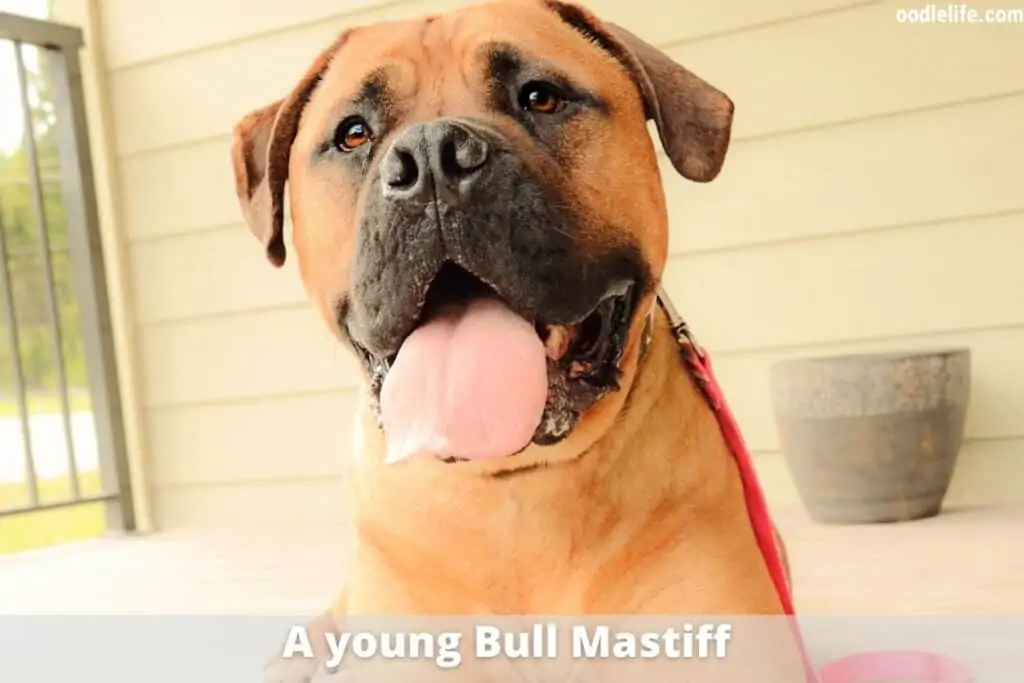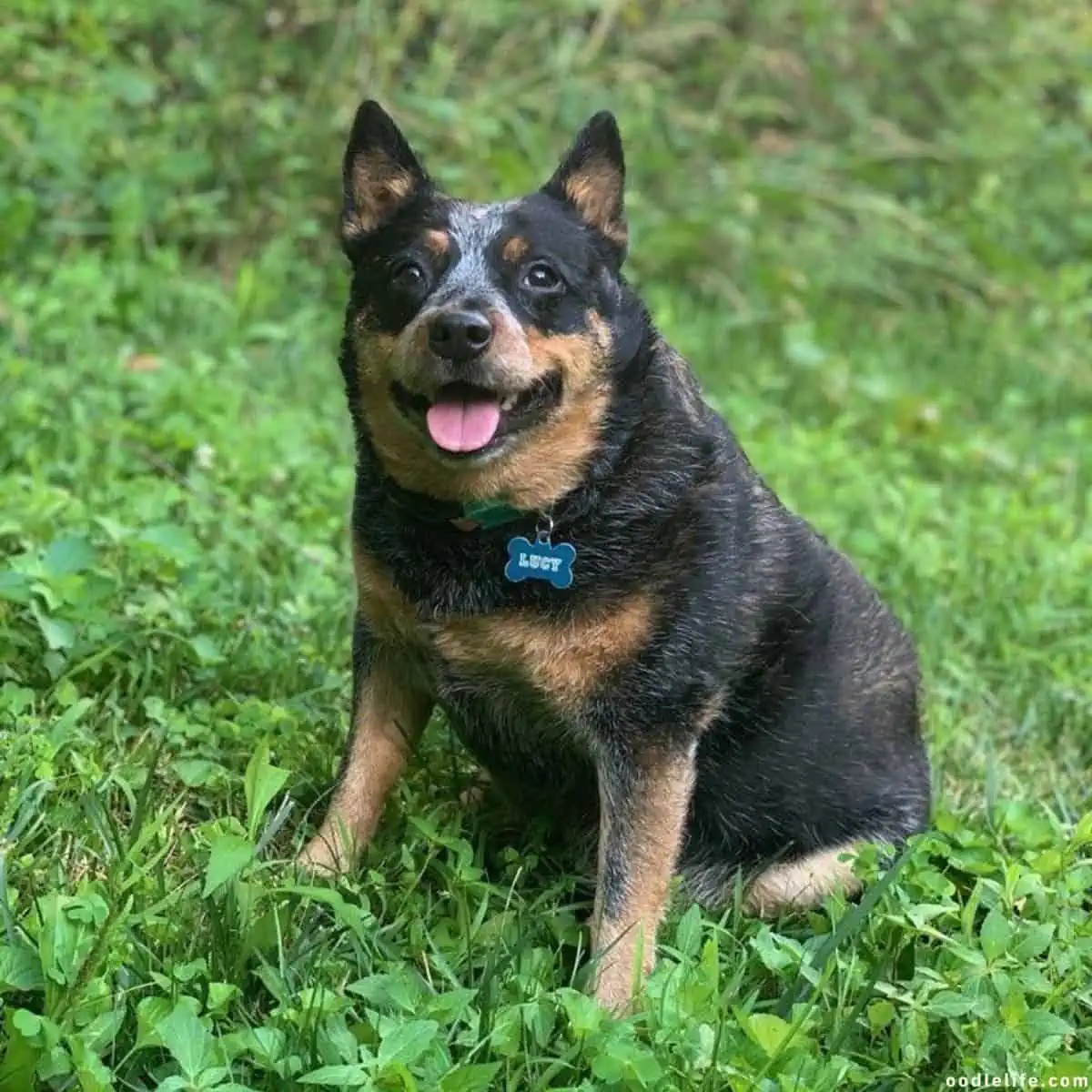How to Teach a Dog to Smile [Training Guide + Video]
Once you’ve mastered the basics of dog training, you may be ready to teach your dog some advanced tricks. Getting a dog to smile on command is an excellent way to make your friends and family laugh, but it does take some effort. Keep reading to learn how.

Why Dogs Naturally Show Their Teeth
Before we break down how to teach your dog this trick, let’s discuss the reasons a dog would naturally show their teeth. Generally, dogs do so for two reasons:
- Submissive grin: A nervous dog may display a submissive grin. You can think of a submissive grin as a diffusing tactic; it’s a way for the dog to show that they don’t want to engage an aggressor. Dogs with submissive grins often have difficulty making eye contact, and they pin their ears back.
- Snarling: On the other hand, snarling signals aggression. A dog that’s snarling or growling often displays body language showing they’re ready to engage: their ears may move forward, and they tend to make intense eye contact.
Regardless of which behavior the dog displays, it’s clear that baring its teeth is a sign of discomfort. As such, you want to avoid teaching either of these two behaviors to entertain friends and family. You will make your dog feel uncomfortable, which is never a good thing, and it also becomes challenging to determine if your dog actually feels threatened.

Cued Smiles
So how do you teach this trick without putting your pet in a stressful situation?
Pay close attention to their body language to avoid bad behavior like biting. A comfortable dog displays relaxed body language and neutral ears, and they give you a funny, cued smile.
How to Teach a Dog to Smile
Now that you understand the importance of teaching this trick properly, let’s break down each of the steps for getting your dog to smile.
Step 1: Have a Positive Approach
To teach this skill, you need a high-value treat; in other words, the treat should be something your dog goes wild for. Make sure to have it on hand when you begin and start training when your dog is relaxed and in a good mood. You may want to begin the session after playing with your pup or while you’re giving them affection.
Take the treat and hold it against one side of your puppy’s mouth, directly above their lips. A natural response is for the dog to lift its lips as it anticipates getting the treat. If they don’t do this, brushing their whiskers should get the dog to raise its lip. As you do this, give the “smile” command in a positive, high-pitched tone. Then give your dog the treat and praise him.
Step 2: Be Consistent
Repeat step one several times until the dog does it successfully. Keep in mind that it may take several training sessions for your dog to master step one. Stay positive and never punish your pup if they don’t smile. Just wait until they do and reward them appropriately. Once the dog lifts his lip well on one side, begin practicing on the other side (make sure to switch hands).
Step 3: Mix Things Up
After your pup has learned to lift his lip on both sides, it’s time to change the treat placement. Instead of putting it on the side of the mouth, put the treat directly over your dog’s nose. Use the same “smile” command. The dog should lift both sides of his lips. Praise and give him affection, and of course, give him the treat.
If your furry friend does not lift both sides of their lips, go back to the previous steps.
Step 4: Clarify Your Expectations
The final step is to eliminate the treats. It’s unrealistic to give your pet a treat every time you want them to perform a command, so this step is vital.
Once you see that your dog consistently performs the trick as desired, you can start using just the verbal command and see how things go. When they obey, you should always praise your dog with a “good girl” or “good boy” and perhaps a pat on the head (or whatever type of affection your dog responds well to).

Things to Keep in Mind
As mentioned above, it’s unnatural for dogs to show their teeth when they’re calm or happy. For this reason, teaching this trick may require a lot more training than others. Here are some other things to keep in mind as you teach your dog to smile:
- Long training sessions are exhausting for both parties and may become counterproductive. It’s best to keep things short for maximum effectiveness.
- Long training sessions also mean lots of treats. As you already know, eating too many treats can be detrimental to your pup’s health, which is another reason to keep sessions short.
- Some dogs may show all their teeth, while others show only the top teeth.
- It’s vital to practice this trick in several different locations. Switching up your environment helps prevent your dog from associating the trick with just one place, so move from room to room as much as possible. You can also practice while walking or playing at the dog park.
- Change treats every now and again to keep things interesting. When your dog never knows what to expect, it’s more likely they’ll smile hard to make sure they get every treat they can!
- If your dog shows aggression during training, it’s time to end the session. Aggression may be a sign that you’re trying to do too much, so you may want to break down the steps even further or only work for a few minutes at a time.

Conclusion
Some dogs will never want to show you their teeth, no matter how much you train them. In this case, it’s best to avoid unintentionally reinforcing snarling or submissive behavior and move on. Impress your friends by teaching your pup to speak, play dead, or hug instead. You’re sure to get a good laugh without risking putting your dog in an uncomfortable situation.